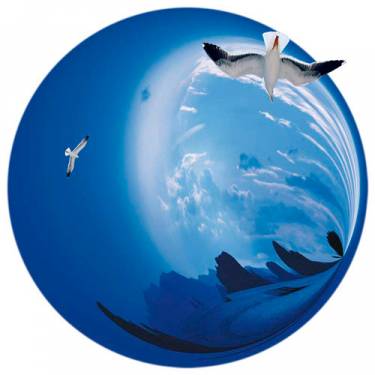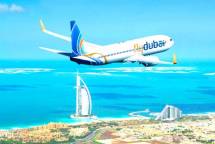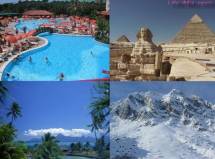International tourism (MT). Was developed in the mid-19th century., With the 2nd half of the 20th century. acquired a mass character. MT
developed in close relationship with the other parties of international
life and the rise or decline reacts growth not only on the overall
political and economic situation in the world, but in some countries (if
they take place, influencing the world market of tourist services) . This explains the uneven development of MT in different years. The increasing number of tourists in the world in 1950-75 is presented in Table. A. (By
the number of tourists to the international statistics means the number
of tourist arrivals registered in either country, but because for one
trip a few tourists visit several countries, the actual number of
somewhat smaller.)
I suggest you read the list of countries from which will be unforgettable impression and not a lot of positive:
1) UAE
2) Finland
3) Switzerland
4) Thailand
5) Egypt
6) Miami
7) Seychelles
8) Brazil
9) Spain
The main tourist region in the world - Europe. It
accounts for almost EQ \ f (2, 3) the number of foreign tourists, and
the same share of world tourist flow make the Europeans, who tend to go a
little beyond the continent. The
main reason - a relatively high price of intercontinental
transportation and high cost of care in many countries outside Europe. In Western Europe, tourist flows for many years had
clear direction from north to south in 60-70s. congestion
due to popular tourist destinations in the Mediterranean coast of
France and Italy as well as the competitive development of the
material-technical base of MT in other countries of the Mediterranean
basin there was a marked reorientation of the European tourist flow in
the southwest (Spain), southeast (NRB, Rumania, Yugoslavia).
Significantly
increased international tourism context of the European socialist
countries, and in 1975 they visited 45 million people., Ie 18% of the
total number of tourists in the world. MT in the European socialist countries, developed mainly in the framework of the socialist commonwealth. In the 70's. significantly
increased tourist flows to the socialist countries of the capitalist
states, in part from developing countries, as well as trips overseas
tourists from socialist countries. In most developed countries of the socialist M. tons in Yugoslavia, NRB, the RAF and Czechoslovakia.
The
second largest tourist region - North America (U.S. and Canada), which
in 1975 accounted for about 16% of the global flow of tourists. Basically it is a so-called common between T. U.S., Canada and Mexico. Outside the continent every year leaves about 5 million people. from the U.S. and about 0.5 million from Canada. There
has been an absolute increase in MT and in Latin America, Africa, Asia,
Australia and Oceania, but they still account for just over 9% of the
number of foreign tourists. With
its rich recreational resources, most developing countries do not have
the necessary material and technical basis for the MT
The
tourist exchange between the countries, except for cultural,
educational and political importance as a means of enhancing mutual
understanding between peoples and to establish closer bilateral
relations, has economic value. Proceeds
from MS that is in a foreign currency account in some countries, an
important source of income and balance of payments grow much faster than
revenues from exports. Growth rates of global revenue from the currency, MT 50-70s. increased
with the rate of growth slightly ahead of the number of international
tourists mainly because higher prices for goods and services in the
capitalist countries.
Tuesday, 23.12.2025, 17:28 | Welcome Guest | Registration | Login



